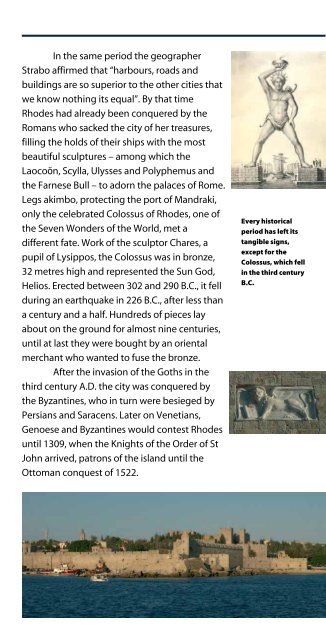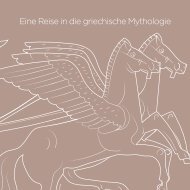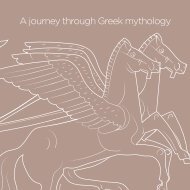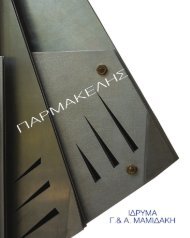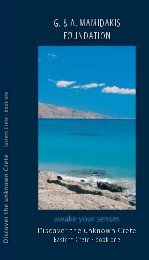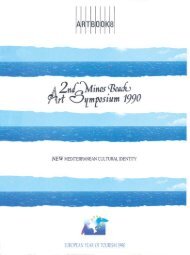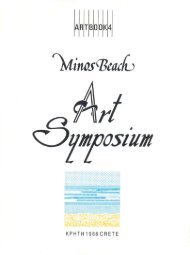Rhodes - Discover the Unknown Rhodes
Η ιδέα της χαρτογράφησης άγνωστων πτυχών δημοφιλών τουριστικών τόπων συνεχίστηκε, μετά την ανατολική Κρήτη, με τον οδηγό αυτό για τη Ρόδο. Οι συντελεστές της έκδοσης εξερεύνησαν, κατέγραψαν, φωτογράφισαν και μετέτρεψαν τις εμπειρίες τους σε έναν πρακτικό οδηγό, αφιερωμένο σε όσους θέλουν να ταξιδεύουν «ψυχή τε και σώματι». Κείμενα: Judith Lange Φωτογραφία: Judith Lange, Μαρία Στέφωση Σχεδιασμός και καλλιτεχνική επιμέλεια: Μαρία Στέφωση Μετάφραση: Julia MacGibbon Επιμέλεια δοκιμίων: John o'Shea Εκτύπωση και βιβλιοδεσία: Γραφικές Τέχνες Δετοράκης ΑΕΒΕ ISBN: 978-960-98384-3-6
Η ιδέα της χαρτογράφησης άγνωστων πτυχών δημοφιλών τουριστικών τόπων συνεχίστηκε, μετά την ανατολική Κρήτη, με τον οδηγό αυτό για τη Ρόδο. Οι συντελεστές της έκδοσης εξερεύνησαν, κατέγραψαν, φωτογράφισαν και μετέτρεψαν τις εμπειρίες τους σε έναν πρακτικό οδηγό, αφιερωμένο σε όσους θέλουν να ταξιδεύουν «ψυχή τε και σώματι».
Κείμενα: Judith Lange
Φωτογραφία: Judith Lange, Μαρία Στέφωση
Σχεδιασμός και καλλιτεχνική επιμέλεια: Μαρία Στέφωση
Μετάφραση: Julia MacGibbon
Επιμέλεια δοκιμίων: John o'Shea
Εκτύπωση και βιβλιοδεσία: Γραφικές Τέχνες Δετοράκης ΑΕΒΕ
ISBN: 978-960-98384-3-6
Create successful ePaper yourself
Turn your PDF publications into a flip-book with our unique Google optimized e-Paper software.
In <strong>the</strong> same period <strong>the</strong> geographer<br />
Strabo affirmed that harbours, roads and<br />
buildings are so superior to <strong>the</strong> o<strong>the</strong>r cities that<br />
we know nothing its equal. By that time<br />
<strong>Rhodes</strong> had already been conquered by <strong>the</strong><br />
Romans who sacked <strong>the</strong> city of her treasures,<br />
filling <strong>the</strong> holds of <strong>the</strong>ir ships with <strong>the</strong> most<br />
beautiful sculptures among which <strong>the</strong><br />
Laocoön, Scylla, Ulysses and Polyphemus and<br />
<strong>the</strong> Farnese Bull to adorn <strong>the</strong> palaces of Rome.<br />
Legs akimbo, protecting <strong>the</strong> port of Mandraki,<br />
only <strong>the</strong> celebrated Colossus of <strong>Rhodes</strong>, one of<br />
<strong>the</strong> Seven Wonders of <strong>the</strong> World, met a<br />
different fate. Work of <strong>the</strong> sculptor Chares, a<br />
pupil of Lysippos, <strong>the</strong> Colossus was in bronze,<br />
32 metres high and represented <strong>the</strong> Sun God,<br />
Helios. Erected between 302 and 290 B.C., it fell<br />
during an earthquake in 226 B.C., after less than<br />
a century and a half. Hundreds of pieces lay<br />
about on <strong>the</strong> ground for almost nine centuries,<br />
until at last <strong>the</strong>y were bought by an oriental<br />
merchant who wanted to fuse <strong>the</strong> bronze.<br />
After <strong>the</strong> invasion of <strong>the</strong> Goths in <strong>the</strong><br />
third century A.D. <strong>the</strong> city was conquered by<br />
<strong>the</strong> Byzantines, who in turn were besieged by<br />
Persians and Saracens. Later on Venetians,<br />
Genoese and Byzantines would contest <strong>Rhodes</strong><br />
until 1309, when <strong>the</strong> Knights of <strong>the</strong> Order of St<br />
John arrived, patrons of <strong>the</strong> island until <strong>the</strong><br />
Ottoman conquest of 1522.<br />
Every historical<br />
period has left its<br />
tangible signs,<br />
except for <strong>the</strong><br />
Colossus, which fell<br />
in <strong>the</strong> third century<br />
B.C.


